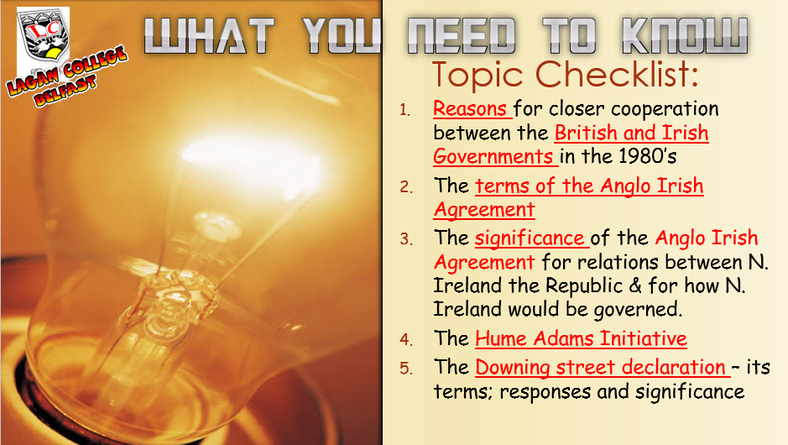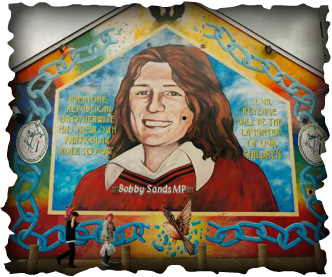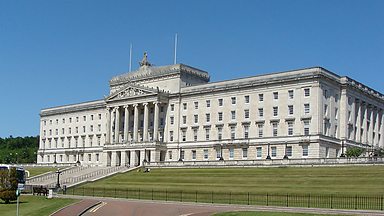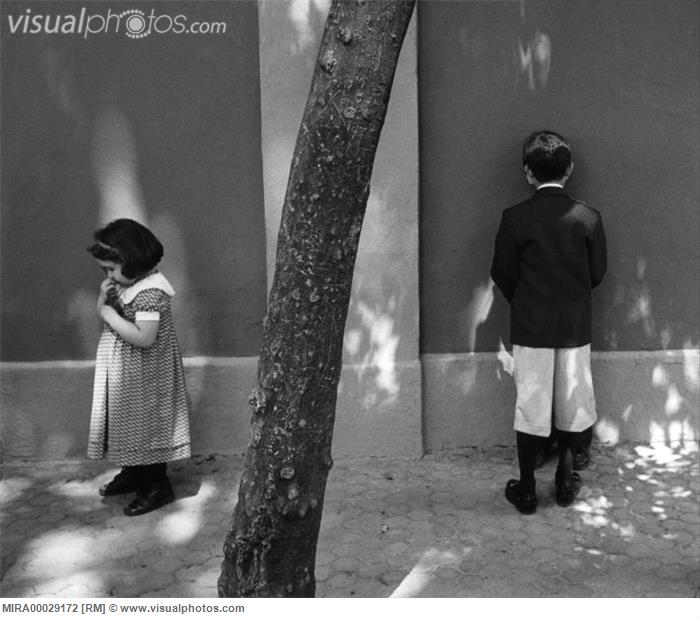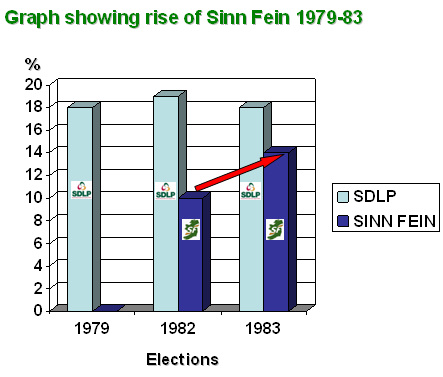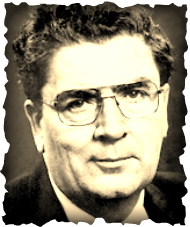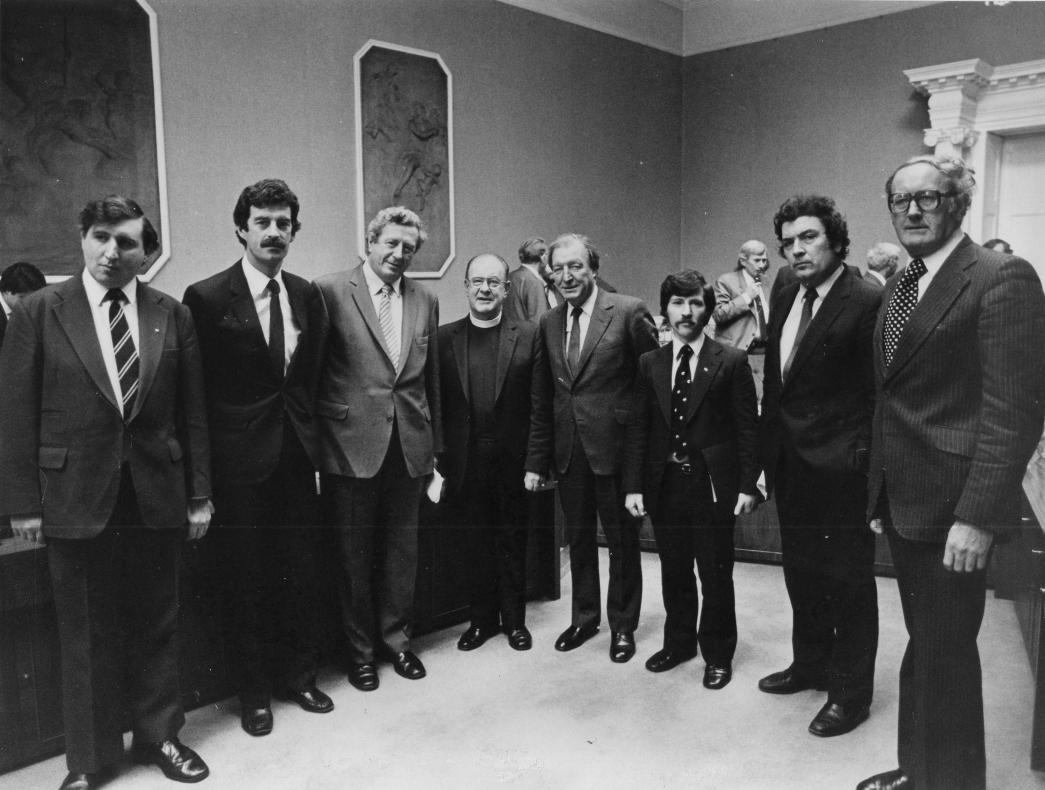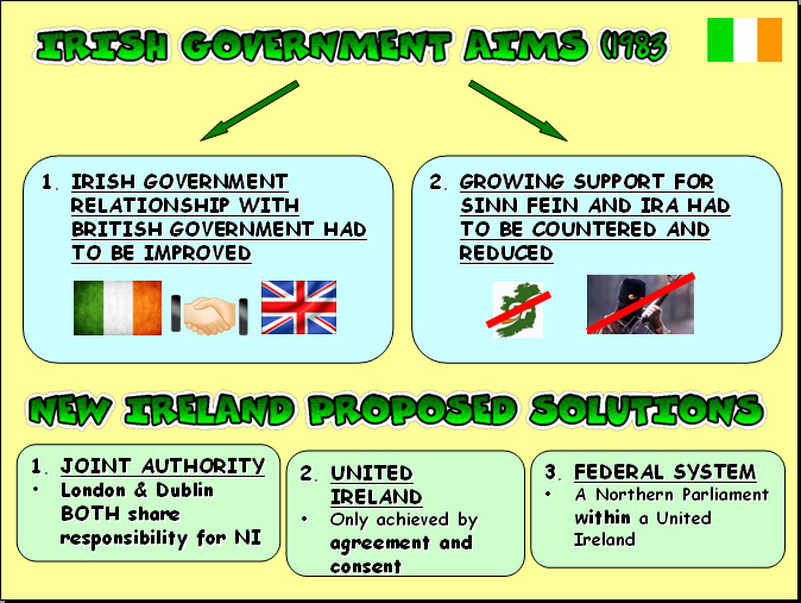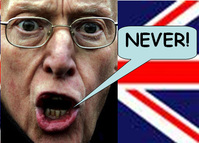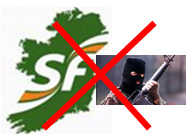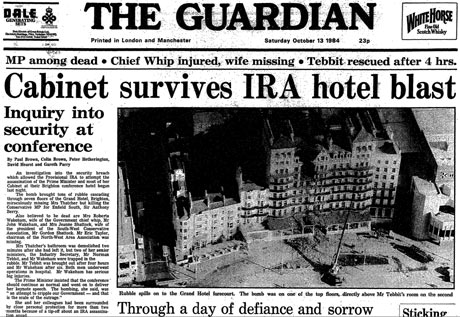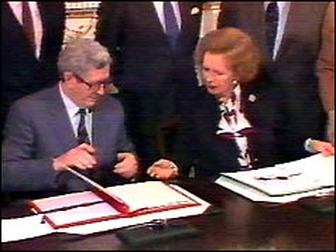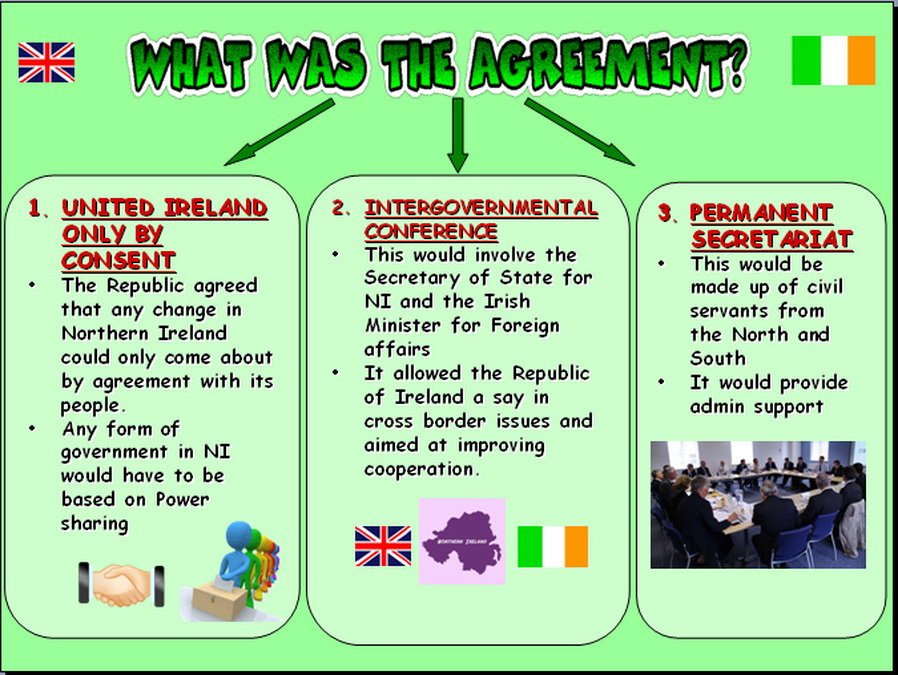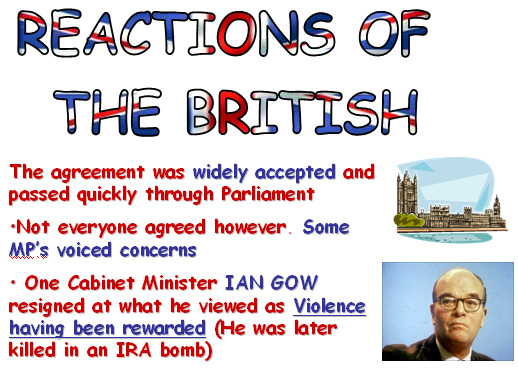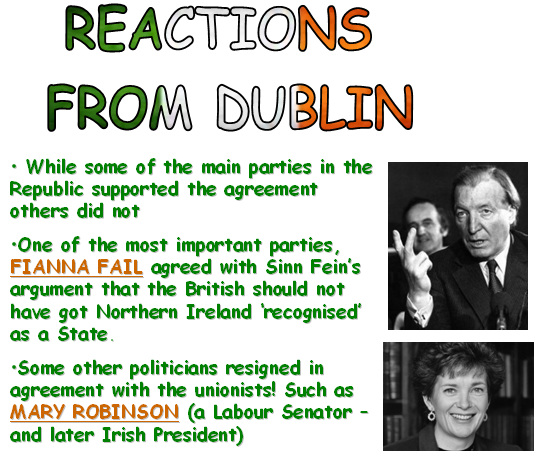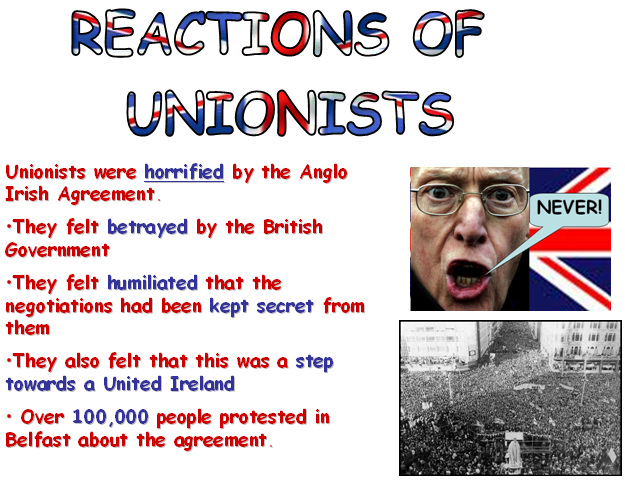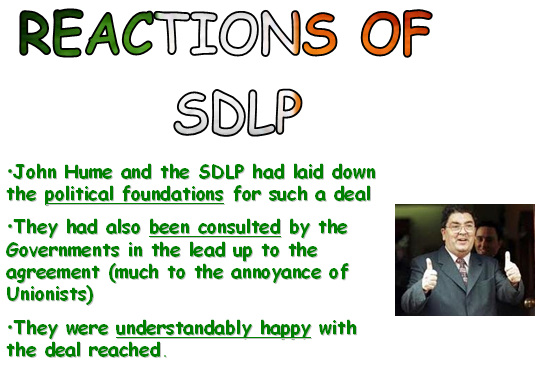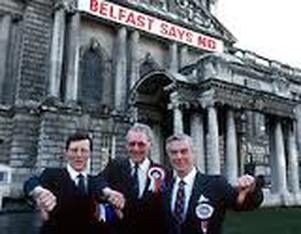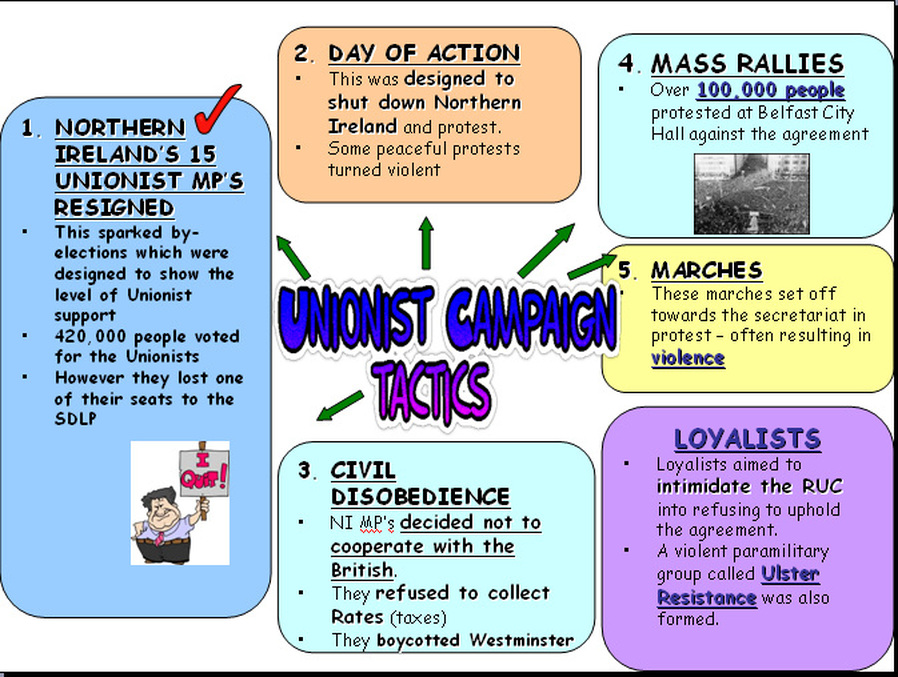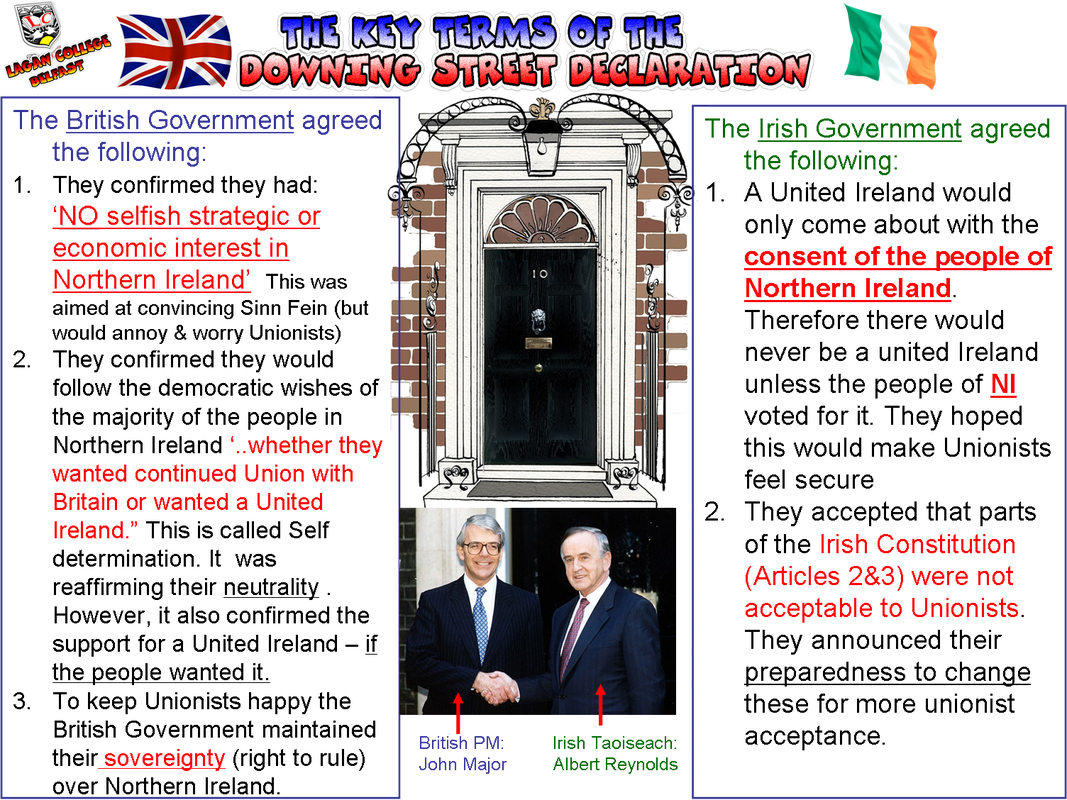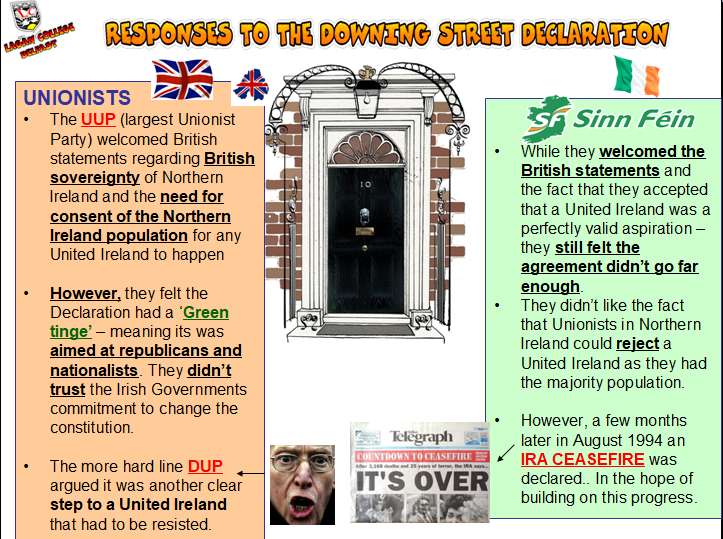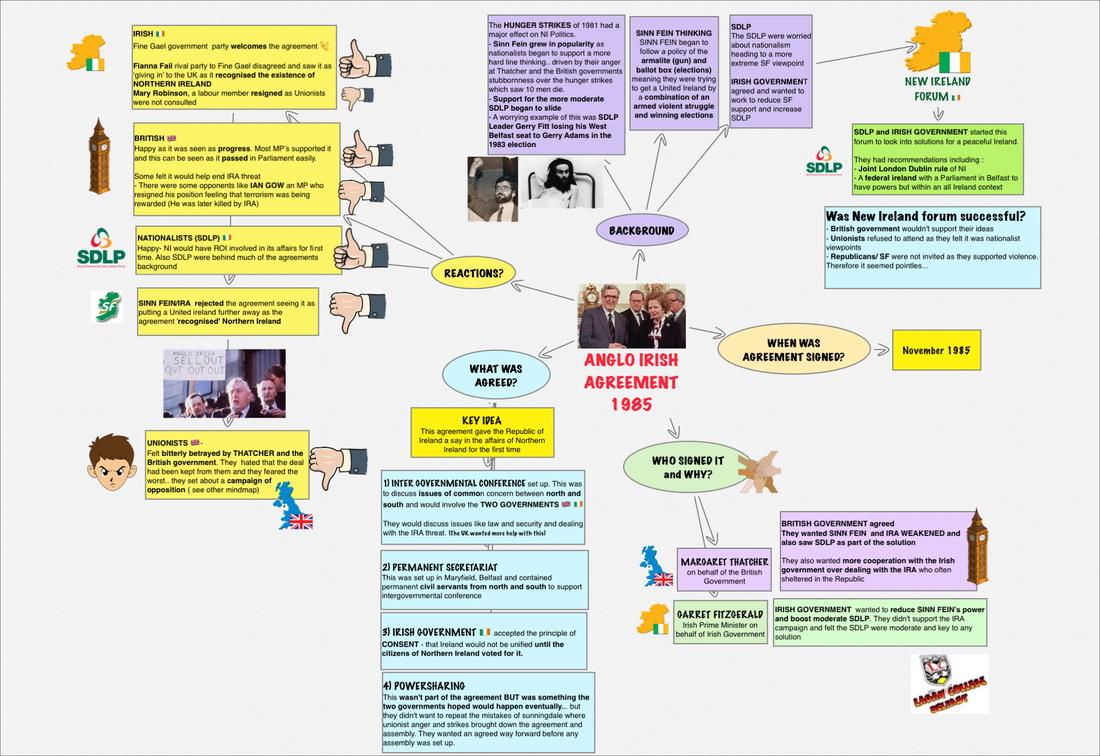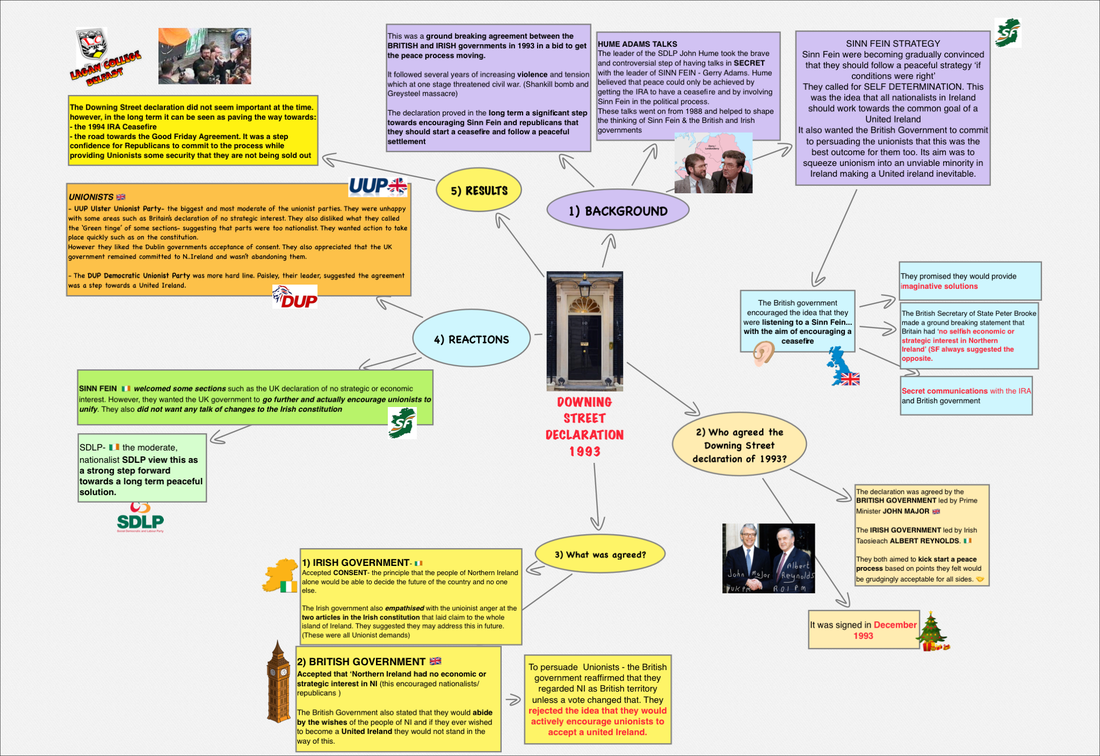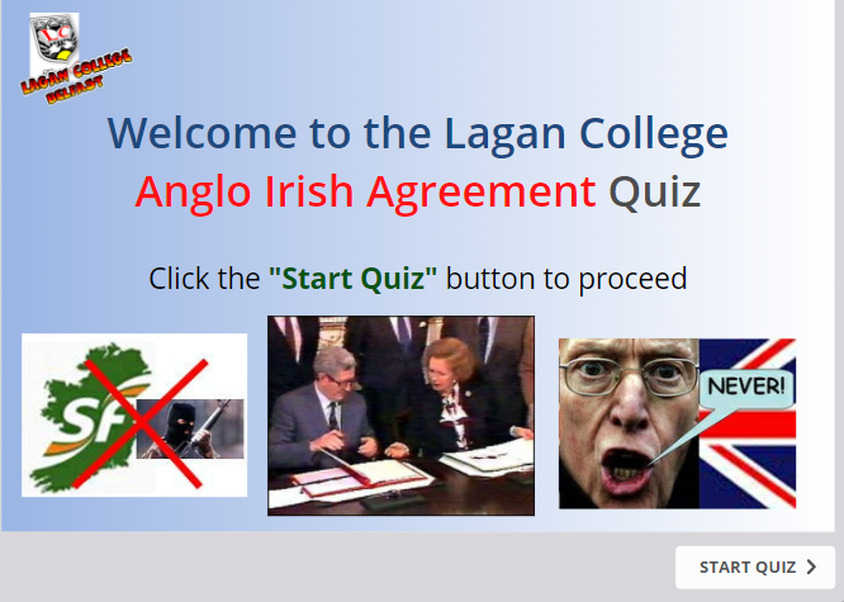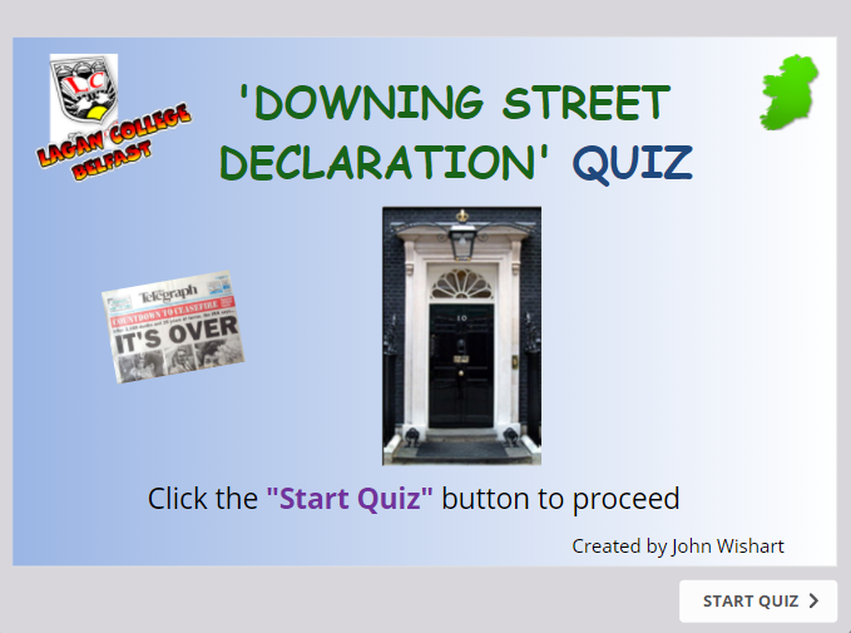|
The big winner from the Hunger Strike of 1981 was Sinn Fein. They were the harder line Republican party with a goal of a united Ireland. They were also closely associated with the IRA. They were a party which began to believe it could support an 'armed struggle' - using violence. As well as campaign politically for votes and power.
WHAT HAPPENED AFTER 1981?
WHAT WAS ROLLING DEVOLUTION?
DID IT WORK? Rolling Devolution had major problems from the beginning:
|
|
WAS IT IMPORTANT?
The Rolling Devolution trial was extremely important in one area. The ELECTIONS.
The Rolling Devolution trial was extremely important in one area. The ELECTIONS.
- It were the 1st contest Sinn Fein had taken part in elections in years.
- The results showed them doing remarkably well, gaining 5 seats and coming close in a few.
- The SDLP meanwhile were disappointed in only gaining 14 seats.
- This process continued in the 1983 General election with Sinn Fein moving even closer to the SDLP in electoral terms and Gerry Adams winning Gerry Fits seat in Parliament.
- This clearly illustrated to 1) the British Government 2) SDLP 3) Dublin Government and 4) The Unionist parties that Sinn Fein were a credible and growing presence.
|
The SDLP were deeply worried about the steady challenge of Sinn Fein. This could see moderate nationalism gradually wiped out (and with it the chance of an agreed settlement)
They decided to establish a NEW IRELAND FORUM WHAT WAS THE NEW IRELAND FORUM? This was simply an open forum to discuss possible options to resolve the conflict in the North and provide long term solutions. Hume wanted the Irish Government to realise 2 things:
|
The New Ireland Forum faced a number of built in problems which weakened its influence considerably.
3. THE BRIGHTON BOMBThe Republic's hope of re establishing relations with London and of them accepting any of the proposals was ruined by the IRA Brighton bomb. This killed 3 people and very nearly killed British Prime Minister, Margaret Thatcher.
THE SIGNS OF ANY FORM OF AGREEMENT OR COMPROMISE LOOKED DIM |
As you can see, the prospects for any agreement looked extremely poor in the mid 1980's. Yet, in 1985, both Governments in the Republic of Ireland and the United Kingdom agreed to sign a landmark document called the ANGLO IRISH AGREEMENT.
- It was signed only between the 2 governments NOT the Northern Ireland Political parties.
- It was also highly controversial at the time and deeply unpopular with Unionists.
What was in the Anglo Irish Agreement?...
For the Irish Government |
|
For the British Government |
|
The agreement was greeted in London and Dublin with enthusiasm. However in Northern Ireland it was highly controversial and produced mixed reactions
Unionists were outraged, upset and angry about the Anglo Irish agreement but they were also absolutely isolated in terms of support. They could not depend on British support as they were part of the agreement and those others who hated the agreement were Sinn Fein and Fianna Fail - who the Unionists obviously despised. They set about a number of actions to try and demonstrate their fury and anger to the world.
The Unionist campaign against the Agreement was doomed from the start.
- The British and Irish Governments had made the agreement over their heads. They had also not created any institutions, like an Assembly, which the Unionists could bring down by refusing to join.
- Embarrassingly, the Unionist protests mirrored nationalist and Republican tactics. This included Civil disobedience, marching, rioting and refusing to go to Parliament.
- Their absence at Parliament was barely noticed as they were only a small part (14 MP's) out of 650
- Their refusal to collect rates was also hardly noticed as councils had very little powers.
- They had even managed to lose a Parliamentary seat in the protest
- The by elections the Unionists called proved one thing - that the agreement was actually already working in one of its goals. The SDLP increased their support and saw Sinn Fein's decline - a result the SDLP and Irish and British Governments were aiming for.
- Unionists were forced to concede defeat and talk to the British Government in 1987
- The Anglo Irish Agreement, although not liked, was also the basis for the Good Friday Agreement through which Northern Ireland is run today through agreed Power sharing.
As we have seen one of the key results of the 1981 Hunger Strikes was the surge in support for Sinn Fein- the hard line republican party and supporter of the PIRA's armed struggle. It was led by Gerry Adams who won a Westminster seat in West Belfast as a result.
The political loser in this was the more moderate, nationalist SDLP, who wanted to achieve an agreed solution for all through peaceful political means. It was led by John Hume, the MP for Foyle (Derry)
Hume recognised the great danger of nationalists following Sinn Fein and how this could lead to civil war and bloodshed. He was determined to prevent this. One disagreeable but pragmatic option open to him was to enter talks with his political enemy - Sinn Fein in the hope of guiding them away from violence and towards the path of peace.
WHY WOULD SINN FEIN BE INTERESTED IN TALKING WITH THE HUME?
The political loser in this was the more moderate, nationalist SDLP, who wanted to achieve an agreed solution for all through peaceful political means. It was led by John Hume, the MP for Foyle (Derry)
Hume recognised the great danger of nationalists following Sinn Fein and how this could lead to civil war and bloodshed. He was determined to prevent this. One disagreeable but pragmatic option open to him was to enter talks with his political enemy - Sinn Fein in the hope of guiding them away from violence and towards the path of peace.
WHY WOULD SINN FEIN BE INTERESTED IN TALKING WITH THE HUME?
- John Hume was very widely respected among nationalists and republicans. He has a long history in the civil rights movement and was very well liked. Sinn Fein had a very narrow and concentrated hard core support in certain areas throughout Northern Ireland. The SDLP was much bigger at this stage and much more respected. Talks with Hume could give its leader Gerry Adams and Sinn Fein much needed respectability. They could be taken more seriously politically by the British and Irish Government.
- Sinn Fein may have been interested in creating a Pan Nationalist front - a joint force for a United Ireland with Sinn Fein, SDLP and potentially the Irish Government. This would make it much harder for the British Government and Unionism to deal with
- Gerry Adams also knew that the PIRA was losing ground in its 'armed struggle' The British security forces were beginning to have a lot more successes and were underminingthe success of the PIRA.
- The PIRA were also making very damaging mistakes with their bombings. Civilians were being killed - The Enniskillen Poppy day bombing was one such mistake.12 people, mostly civilians were killed when a bomb went off at a poppy day ceremony. There was outrage across the world and in the Republic of Ireland.at such an attrocity. Sinn Fein would suffer politically for this with slumps in its support - It also made Sinn Fein and Adams realise that a political way forward was needed - Gerry Adams had stated that he could foresee the prospect of an 'unarmed struggle.' raising the possibility of progress. John Hume was essential in creating this way forward for them.
What were the results of the Hume Adams Initiative?
The Hume Adams talks at the time were highly controversial and seemed to deliver little. However, with hindsight they proved very important in the peace process:
- John Hume was deeply criticised for meeting with Gerry Adams - from ALL sides - even his own party! Adams and Sinn Fein were widely hated across the British Isles - especially after the Enniskillen bombing. Unionists especially regarded it as talking with the enemy.
- The talks were very useful for discovering the key differences in each others political stance and viewpoints: They both viewed the role of the British Government very differently for example: Sinn Fein felt that the British has strategic, economic, political and military interests in Northern Ireland. The SDLP felt the opposite : That the British Government were in fact neutral in the political situation and wanted an agreed and potentially peaceful resolution.
- The talks convinced John Hume that Sinn Fein were serious about moving towards peace - He was prepared to risk his personal reputation and his party on this. This would later pave the way for the first agreements and eventual ceasefire.
The Downing Street Declaration was an important milestone in the Northern Ireland Peace Process signed in December 1993.
It was a Joint document produced by the Governments of both the United Kingdom and Republic of Ireland stating their key thoughts on the removal of conflict. It was 'sending signals' to all sides in the conflict and was a major part of the peace process leading to the Paramilitary ceasefires and eventually the Good Friday Agreement.
It was a Joint document produced by the Governments of both the United Kingdom and Republic of Ireland stating their key thoughts on the removal of conflict. It was 'sending signals' to all sides in the conflict and was a major part of the peace process leading to the Paramilitary ceasefires and eventually the Good Friday Agreement.
The Downing Street Declaration of 1993 seemed to have achieved little major progress at the time. However, with hindsight it is a major step on the road to a peaceful settlement and the Good Friday Agreement of 1998:
- It had used the knowledge from the Hume Adams talks to reach out and encourage Sinn Fein into the peace process. The British government carefully worded its statements about strategic interests to encourage Sinn Fein into a peaceful political peace process.
- The Unionists were not wholly convinced by the declaration but they were encouraged by some elements like consent which removed the fear of entering into an eventual political process.
- They key result was the IRA and subsequent Loyalist ceasefires of Summer 1994, which arguably could not have come about without the declaration
|
|
|
|
|
|
|
|
|
TEST YOURSELF - TRY THE QUIZ
© J Wishart / Rita Morgan 2019
